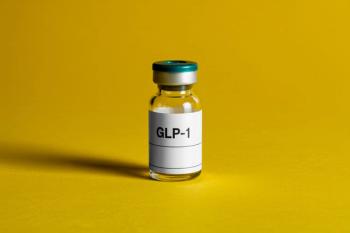
Defusing Catastrophe
Here’s how to help patients—and ourselves—recognize cognitive distortions.
Everyone has experienced moments when one bad outcome convinces us we are doomed to a life of failure. These catastrophic thoughts are akin to making a proverbial mountain out of a mole hill. It is why after a breakup, we think no one will ever love us. It is that seizing fear when waiting on a doctor’s report. It is that gnawing feeling when someone vaguely texts “we need to talk.”
This exaggerated expectation that only the worst possible outcome will occur can exert a powerful and debilitating influence over our lives. Left unchecked, these catastrophic thoughts can set dangerous patterns that prohibit us from taking reasonable chances, following inspiration, or recognizing life’s silver linings.
As psychiatrists, we often encounter catastrophic thinking in our patients. We understand how difficult it can be to change these patterns, even with professional help. And while it is often easier to see this in others, the demands of our profession make us susceptible to falling into these very same traps. Tasked with supporting our patients’ well-being, psychiatrists—and physicians in general—feel enormous pressure to produce positive changes in their lives. When our patients suffer setbacks, it is hard to not take it personally. And it can cast a strong and deeply personal shadow of doubt on our abilities.
Then there are the traps of burnout that can lead to catastrophic thinking: regulatory hoops, the ever-increasing bureaucracy and paperwork, clinician shortages, training mandates, the threat of
Getting out of a catastrophic funk requires following the same treatment and advice we might give our patients. This means asking for help when we need it—something many physicians find difficult to do. Our jobs require us to be stalwart and seemingly infallible, but without balance and mindfulness, we continue to walk a dangerous razor’s edge of catastrophic thinking.
What is Catastrophic Thinking?
Catastrophic thinking, also known as magnifying, is a kind of cognitive distortion—a thought pattern that is irrational or exaggerated. Psychologist Albert Ellis, PhD, first coined the phrase in 1957 as he was developing his rational-emotive behavior therapy, a precursor to modern-day
Catastrophic thinking can be triggered by one’s perception of what is happening at present or what they anticipate will happen in the future. Situations that trigger magnifying usually fall into 3 categories: how we interpret vague or ambiguous information, how we cope with the loss of someone or something valuable, and fear—especially irrational fear.
Catastrophic thinking shares some similarities with
Ironically, catastrophic thinking can serve as a dysfunctional coping mechanism. After all, if you are always expecting the worst, you will rarely be disappointed. But this comfort can come at a steep price—one that can increase debilitating feelings of anxiety, avoidance, and isolation.3
Magnifying can also affect and intensify how we experience pain. This is especially true with those suffering from chronic
Catastrophizing and Physician Burnout
Among physicians,
In addition to feelings of cynicism,
Physician burnout is a common problem that has far-reaching effects. For patients, it can result in lower-quality care, medical errors, longer recovery times, and lower patient satisfaction. Physicians are more likely to experience substance abuse problems, depressive and
The pandemic has created its own unique breeding ground for burnout, with 53% of health care workers reporting high levels. Heading into its third year, the rebounding pandemic and its relentless pressure on the health care system creates an environment ripe for catastrophic thinking. Rather than succumb to its pitfalls, awareness is the first step in fortifying our mental defenses.
Psychiatrists are particularly susceptible to burnout, more so than surgeons and other physicians. In some ways, the stakes are higher, as our patients are more prone to violence and suicide. Because we use ourselves as tools to treat patients, we are vulnerable to a powerful range of emotions. These include feeling powerless against illness, fear of becoming ill, and the obsessive need to rescue patients.9
Decatastrophizing Catastrophe
Ellis did more than identify catastrophic thinking. He highlighted a way out of it by expanding the original ABC model to include ABCDE. The “D” refers to the disputation of beliefs, which calls for irrational thoughts to be converted into rational ones. And the “E” represents the effects these new and healthier thoughts might have on a person’s well-being. One of the best ways to counteract catastrophic thinking is by challenging it. Ellis’ method of decatastrophizing involves posing rational questions,3 such as:
-What exactly am I worried about?
-How likely is this event to occur?
-What is the worst thing that can happen?
-If this happened, what would I do?
-What might I say to reassure myself?
Sometimes, saying “stop” out loud can help disrupt the pattern of repetitive negative thoughts. In the heat of the moment, it can be difficult to recognize catastrophic thinking as it is happening. The help of a clinician can clearly define these patterns and use a cognitive-behavioral approach to decatastrophizing. In some situations, clinicians may prescribe antidepressants or other medications to address the root causes of catastrophic thinking.
Over time, this hard work of observing patterns and reframing our reaction pays off in the form of hard-earned
Transcendental meditation (TM):TM is a meditation technique that involves silently repeated mantras to help reduce stress and promote a relaxed state of awareness. In one of the author’s studies, health care workers during the pandemic who practiced TM for 3 months showed significantly improved symptoms of emotional exhaustion, anxiety, and
Mindfulness: This practice turns down the volume of mental chatter by engaging full attention on our daily and mundane tasks. By focusing on the here and now, mindfulness can help practitioners gain broader awareness of cognitive patterns and better control over irrational thoughts. One study found mindfulness was predictive of lower levels of disability, anxiety,
Sudarshan Kriya yoga (SKY):Through structured body postures, breathing exercises, and cognitive-behavioral processes, practitioners learn relaxation and stress-management techniques. Studies indicate that SKY offers a therapeutic option capable of reducing symptoms of depression and anxiety.13
Self-care: Exercise, healthy eating, and getting enough sleep all help shore up our defenses against catastrophic thinking. Being kind and tending to one’s needs can have a calming effect on our tendency to dwell on the negative.
Clickable technology: Web- and phone-based apps provide quick, anonymous options to those hesitant about seeking mental health treatment. This technology helps users track moods, learn mindfulness techniques and exercises, and keep catastrophic moods in check. One study found that online tools helped reluctant health care workers reduce stress, burnout, depression, and suicidal ideation.14
Examples of apps include:
-
-
-
Concluding Thoughts
They say physicians make the worst patients. Our need to display strength and dependability can prevent us from seeking help when we need it. As a result, many of us would prefer to cope alone rather than admit weakness and face the silent judgement of our peers. But this thinking runs counter to what motivated us to pursue a career in mental health in the first place. We often preach that our overall health is deeply grounded in mental health. Physicians can improve overall patient care by identifying situations that lead to catastrophizing and burnout and taking measures to correct it.
Catastrophizing can be catastrophic, but it can be managed by building resilience. As physicians, we need to apply this to ourselves just as we do our patients. As the saying goes, “Physician, heal thyself.” Never has this been more apt than in the current pandemic.
Dr Vaishnavi is a neuropsychiatrist, cognitive neuroscientist, adjunct associate in the department of medicine at Duke University, and a psychiatrist with
References
1. Selva J. Albert Ellis’ ABC model in the cognitive behavioral therapy spotlight. Positive Psychology. December 13, 2021. Accessed February 2, 2022.
2. Seligman MEP, Allen AR, Vie LL, et al.
3. Lonczak HS. Catastrophizing and decatastrophizing: a PositivePsychology.com guide. Positive Psychology. December 7, 2021. Accessed February 2, 2022.
4. Quartana PJ, Campbell CM, Edwards RR.
5. Gatchel RJ, Neblett R. Pain catastrophizing: what clinicians need to know. Practical Pain Management. Accessed February 2, 2022.
6. West CP, Dyrbye LN, Shanafelt TD.
7. Queen D, Harding K.
8. West CP, Dyrbye LN, Shanafelt TD.
9. Kumar S.
10. Joshi S, Vaishnavi S, Brucker A, et al. Targeting healthcare provider burnout during the COVID-19 pandemic. 2022 ATS (American Thoracic Society) International Conference, May 13-18, 2022.
11. Azizoddin DR, Kvaternik N, Beck M, et al.
12. Cassidy EL, Atherton RJ, Robertson N, et al.
13. Hamilton-West K, Pellatt-Higgins T, Sharief F.
14. Pospos S, Young IT, Downs N, et al.
Newsletter
Receive trusted psychiatric news, expert analysis, and clinical insights — subscribe today to support your practice and your patients.













